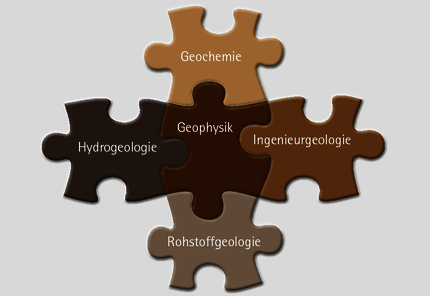Division
Applied Geosciences
Already in the motivation of the proposal of creating a Geological Survey of Austria in 1849 (at that time called "Geologische Reichsanstalt") it was stated, that the knowledge gain on the geology of the country should serve in particular for various applied purposes.
This principle has not changed during the more than 150 years old history of this scientific institution. But social changes have led to certain necessary adaptions.
In the modern language of the current law (“Forschungsorganisationsgesetz” §20 (2)) this practice related assignment of tasks is formulated as applied geoscientific mapping . The hereby named partitions are:
- Resource based geological mapping, in particular the acquisition and evaluation of occurrences of mineral resources with its special task to survey the federal territory for useable deposits
- Hydrogeological mapping, in particular the acquisition and evaluation of underground water reservoirs including research and development of geothermal energy.
- Engineering geological mapping, in particular the acquisition of geogenic based natural hazards.
- Geochemical mapping for acquisition and evaluation on elemental and material distribution in the geosphere, in particular for environmental geological based questions.
- Geophysical mapping for acquisition and evaluation of geophysical parameters, in particular for supporting geoscientific tasks.
For the fulfilment of these tasks the three thematic scientific departments (Engineering Geology, Raw Materials/Mineral Resources and Hydrogeology & Geothermal Energy) are addressed in joint project oriented cooperation. Hereby they are supported by the methodical oriented scientific departments of Geochemistry and Geophysics, which offer their services also to the Geological Mapping Division and for supportive basic research. Additionally to their subject-related mapping these departments are working on systematic and methodical research in their own fields
The division of Applied Geosciences coordinates the activities of the five mentioned departments guaranteeing their interdisciplinary cooperation and altogether determines the strategic direction.

